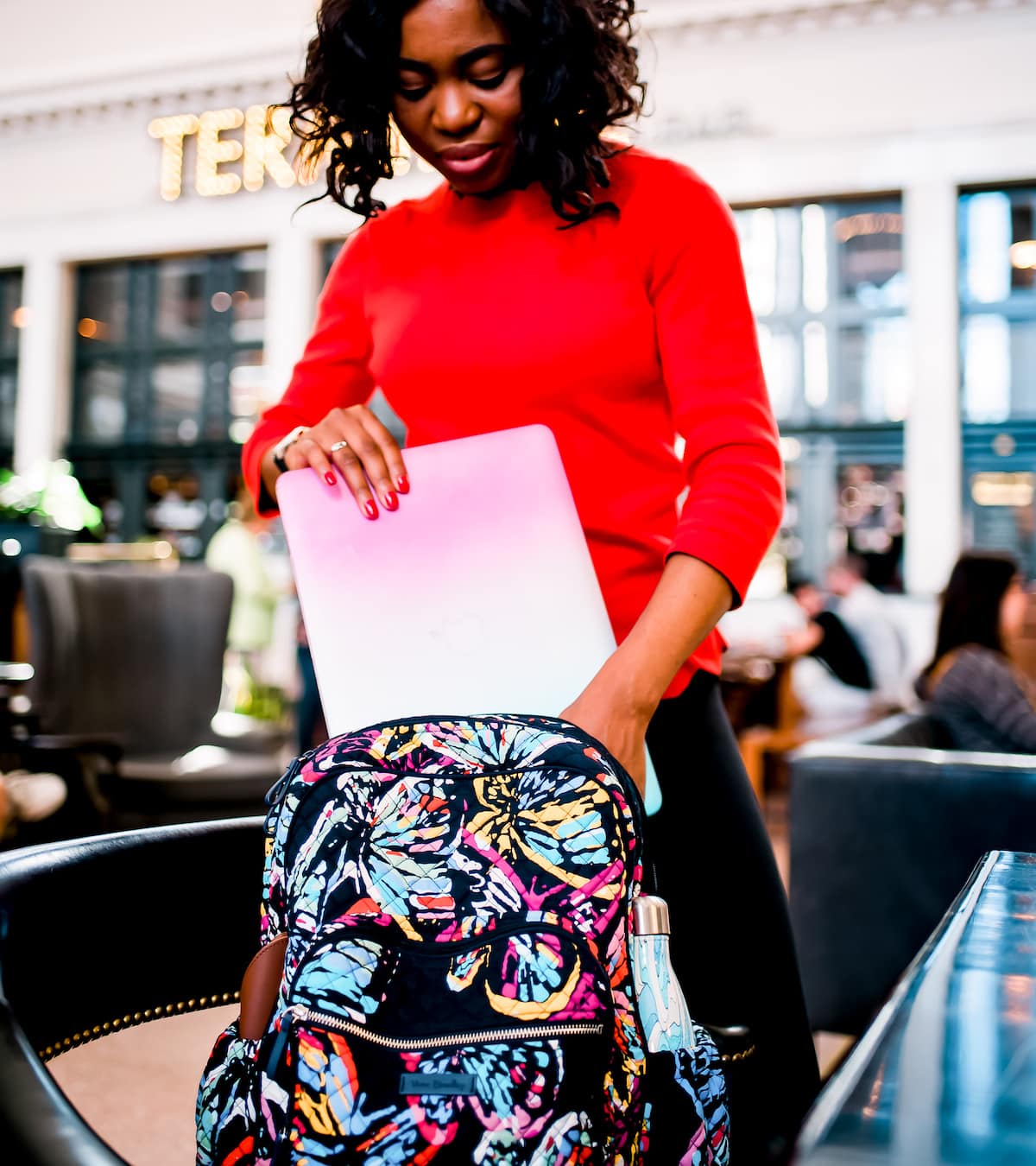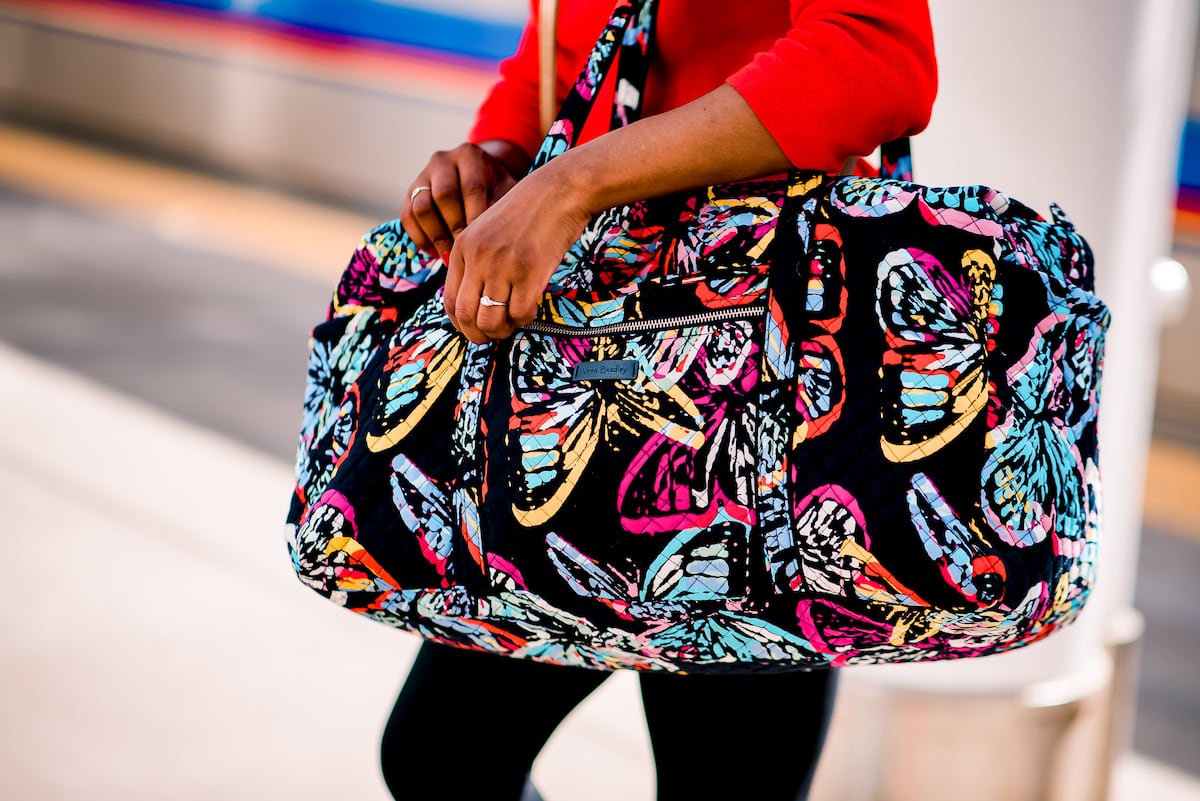To wash a Vera Bradley bag, first check the material and care tag. Hand wash with a mild detergent in cold water, or use a gentle, cold machine cycle.

Your vibrant Vera Bradley bag is a staple of your collection, but daily use means it will eventually need a refreshing clean. Knowing the correct way to wash it is crucial to preserving its color, shape, and integrity. This comprehensive set of instructions provides expert methods for keeping your bag looking its best.
Table of Contents

Before You Begin: What to Check on Your Vera Bradley Bag
Before any water touches your bag, a few preliminary checks are essential to prevent damage. Rushing into the cleaning process without proper assessment can lead to faded colors, misshapen fabric, or ruined structural components. Taking a few moments to inspect your bag and its materials is the first step a professional would take.

Identifying the Bag’s Material (Cotton, Microfiber, Leather Trim)
Vera Bradley utilizes several different materials across their product lines, and each requires a slightly different approach. The most common is their signature quilted cotton, which is generally durable but susceptible to color bleeding if washed improperly. Microfiber styles are smoother to the touch and often more resistant to water and stains, but they can be damaged by harsh chemicals.
The most critical element to identify is any leather trim or detailing. Water and conventional detergents can dry out, crack, or discolor leather. If your bag features leather handles, zipper pulls, or decorative patches, it will require a more targeted cleaning method that protects these sensitive areas. Proper care is universal for quality accessories; just as you’d care for a premium item like a Beldtura Leather wallet, the details on your Vera Bradley bag demand special attention.
Locating the Care Label: What Do the Symbols Mean?
The manufacturer’s care label is your most reliable source of information. Typically sewn into an interior seam, this tag provides specific instructions for your bag’s material composition. Some bags will explicitly state “Machine wash cold, gentle cycle,” while others may recommend “Spot clean only.” Always defer to these instructions first.
Understanding the symbols is equally important. A tub with a hand in it means hand wash only, while a crossed-out triangle means do not use bleach. A square with a circle inside that is crossed out is a clear warning against using a machine dryer. Following these symbols is non-negotiable for preserving your bag’s condition.
Essential Preparation: Emptying Pockets and Removing Inserts
Thoroughly empty every pocket and compartment of your bag. Forgotten items like pens, makeup, or receipts can create a disastrous mess when mixed with water. Leave all zippers and clasps unfastened to allow water to clean every crevice effectively.
Most importantly, check for a removable base. Many Vera Bradley totes and duffels have a stiff cardboard or plastic insert at the bottom to provide structure. This piece must be removed before washing. If it becomes saturated with water, it will warp, disintegrate, or develop mildew, permanently ruining your bag’s shape and integrity.
The Gentle Approach: How to Hand Wash Your Vera Bradley Bag
Hand washing is universally the safest and most recommended method for cleaning a fabric bag. It gives you complete control over the process, minimizing stress on the seams, colors, and fabric. This gentle technique is especially important for bags with intricate quilting or delicate embellishments.
Step 1: Gathering Your Cleaning Supplies
To effectively hand wash your bag, you will need a few simple items. Having everything ready beforehand makes the process smooth and efficient.
| Item | Purpose |
|---|---|
| Large Basin or Clean Sink | For submerging the bag completely. |
| Mild Detergent | Choose a color-safe, gentle formula free of bleach or fabric softeners. |
| Cold Water | Hot water can cause colors to bleed and fabric to shrink. |
| Soft-Bristled Brush or Cloth | For gently scrubbing stubborn stains. |
Step 2: Pre-Treating Stains and Soiled Areas
Before submerging the entire bag, address any noticeable stains. Apply a small amount of your mild detergent directly to the affected area. Use a soft-bristled brush (like a toothbrush) or a microfiber cloth to gently work the detergent into the stain in a circular motion. Let it sit for 10-15 minutes, but do not let it dry. This pre-treatment step significantly increases the chances of removing tough spots like dirt, food, or makeup smudges.
Step 3: The Submersion and Washing Process
Fill your basin or sink with cold water and add a small amount of mild detergent, swishing it around to create a sudsy solution. Place your prepared Vera Bradley bag into the water, pressing down gently to ensure it is fully saturated. Allow the bag to soak for about 30 minutes. After soaking, use your hands to gently agitate the bag in the water, squeezing the soapy water through the fabric. For dirtier areas like the bottom or straps, use your soft brush or cloth to scrub lightly.
Step 4: Rinsing Thoroughly to Remove Soap
Drain the soapy water and refill the basin with clean, cold water. Submerge the bag again, squeezing it gently to work the soap out. You may need to repeat this rinsing process two or three times. It is crucial to remove all detergent residue, as leftover soap can stiffen the fabric and attract more dirt over time. Continue rinsing until the water runs clear and no more suds appear when you squeeze the bag.
Can You Machine Wash a Vera Bradley Bag? A Cautious Method
While hand washing is the safest option, some signature cotton Vera Bradley bags can tolerate a machine wash if the care tag permits it and you take specific precautions. This method is best reserved for durable, all-cotton bags without any leather or delicate hardware. If you are ever in doubt, stick to hand washing.
When Is Machine Washing an Option?
Machine washing should only be considered if the bag’s care label explicitly allows it. It is generally suitable for sturdy items like backpacks, duffel bags, or totes made entirely of quilted cotton. Avoid machine washing any bag with a rigid structure, leather components, or delicate accents, as the agitation can cause irreversible damage. The risk of color fading or fabric wear is higher in a machine, so weigh the convenience against the potential for harm.
Choosing the Right Detergent and Machine Settings
Success in machine washing hinges on using the correct settings. Always select the gentle or delicate cycle on your washing machine. This setting uses a slower spin speed and less agitation, mimicking the gentler action of hand washing. Crucially, you must use cold water to prevent shrinking and color bleeding.
Use a small amount of a mild, color-safe liquid detergent. Powdered detergents may not dissolve fully in cold water and can leave a chalky residue on the fabric. Never use bleach or fabric softener. Bleach will ruin the vibrant patterns, while fabric softener can break down the fibers and leave a coating that reduces the fabric’s integrity.
Protecting Your Bag During the Wash Cycle
To give your bag an extra layer of protection, place it inside a large mesh laundry bag or a zippered pillowcase before putting it in the washing machine. This prevents the straps from tangling around the machine’s agitator and reduces friction against the drum, which can cause pilling or damage to the quilting. You can also wash the bag with a few towels of a similar color to provide cushioning and balance the load.
The Crucial Final Step: How to Dry a Vera Bradley Bag Correctly
How you dry your Vera Bradley bag is just as important as how you wash it. The wrong drying method can undo all your careful work, leaving you with a shrunken, misshapen, or damaged item. Patience is key to achieving a perfect, like-new result.
Why You Should Never Use a Machine Dryer
Under no circumstances should you put your Vera Bradley bag in a machine dryer. The high heat is its worst enemy. Heat can cause the cotton fabric to shrink significantly, warp any plastic or metal hardware, and melt adhesives used in the bag’s construction. It can also cause the vibrant colors to fade prematurely. Even a low-heat or “air fluff” setting is too risky. Always opt for air-drying.
The Best Air-Drying Techniques for Shape Retention
After washing, gently squeeze out excess water from the bag—do not wring or twist it, as this can break fibers and ruin the shape. Lay the bag on a clean, dry, white towel and roll them up together, pressing firmly to absorb more moisture. Unroll and reshape the bag by hand. Stuff the main compartments and pockets with white towels or crumpled white packing paper to help it hold its original form as it dries.
Hang the bag or lay it flat in a well-ventilated area away from direct sunlight or heat. Direct sun can cause colors to fade. Hanging a heavy, wet bag by its straps can cause them to stretch, so it is often better to lay it flat on a drying rack. Allow it to dry completely, which may take 24 hours or more. Ensure it is 100% dry before use to prevent any mildew growth.
What About Special Cases? Cleaning Tips for Different Styles
Not all bags are simple quilted cotton totes. Special features like leather trim or minor spills require a more nuanced approach than a full submersion wash.
Handling Bags with Leather Trim or Accents
If your bag has leather handles, patches, or trim, you must avoid getting them wet. For these styles, spot cleaning is the only safe method. Use a damp cloth with a tiny amount of mild detergent to clean the fabric portions, being careful not to touch the leather. For the leather itself, use a cleaner specifically designed for leather. Apply a small amount to a clean cloth and gently wipe the leather. Afterward, you can use a leather conditioner to restore moisture and protect it. Treating these details with care ensures the entire accessory remains in pristine condition.
Spot Cleaning for Minor Spills and Stains
For small spills or isolated dirty spots, a full wash is unnecessary. Spot cleaning is a quick and effective alternative. Mix a few drops of mild detergent with a cup of cold water. Dip a clean, white cloth into the solution and blot the stain gently, working from the outside in to prevent it from spreading. Do not rub aggressively. After lifting the stain, use a separate cloth dampened with plain water to blot the area and “rinse” it. Let it air dry completely.
Maintaining Your Bag’s Freshness Between Washes
Proper care extends beyond washing. How you store and maintain your Vera Bradley bag on a daily basis can significantly prolong its life and keep it looking fresh, reducing the need for frequent deep cleanings.
Proper Storage to Prevent Dust and Fading
When not in use, store your bag in a cool, dry place away from direct sunlight. Storing it in a breathable dust bag or an old pillowcase can protect it from dust and prevent color fading. To help it keep its shape, stuff it lightly with acid-free paper or an old t-shirt. Avoid hanging bags by their straps for long periods, as this can cause stretching and stress on the seams.
Quick Refreshing Tips
To keep your bag fresh between washes, you can air it out by leaving it open in a well-ventilated area for a day. If it develops a musty odor, placing an open box of baking soda inside for a day or two can help absorb unwanted smells. For surface dust, a lint roller or the upholstery attachment on your vacuum cleaner works wonders to quickly clean the exterior and interior without a full wash.



